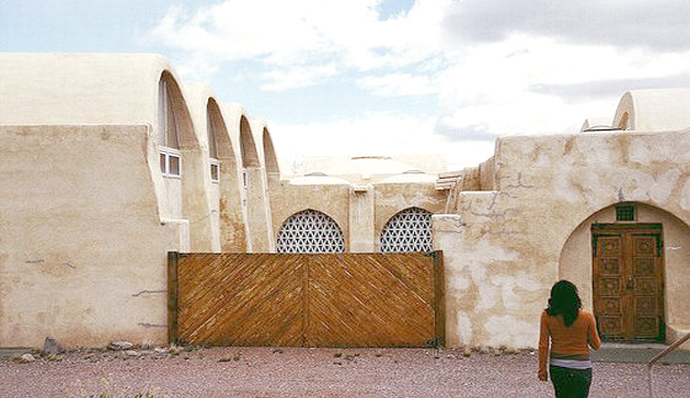Hassan Fathy: “The Egyptian architect who saw the value of traditional techniques in architecture long before it became a fad in the west,” with these words, the western world praise the legendary Egyptian Architect Hassan Fathy, who was called the Middle East’s father of sustainable architecture.
The Egyptian architect was born in 1900 in Alexandria and died in 1989. He was recognised with the Aga Khan Architecture Chairman’s Award in 1980. The reason behind his distinctive profile as an architect is his outstanding views about architecture which he translated into his work. He adopted ancient design methods and materials taking into consideration the rural Egyptian economic circumstances with a wide knowledge of ancient architectural and town design techniques. He was a pioneer in using mud bricks as a traditional way of building as opposed to western buildings designs. He designed nearly 160 separate projects, from modest country retreats to fully planned communities with police, fire and medical services, markets, schools, theatres, and places for worship and recreation. These communities included many functional buildings such as laundry facilities, ovens, and wells. He even trained local inhabitants to make their own materials and build their own buildings.
One of the most significant architecture projects designed by Hassan Fathy was Gourna village in Luxor, where he cared more about improving the standard of living of 7 thousand Egyptian residents who were randomly living in Gourna village around the ancient Egyptian monuments in 1946. Government officials at that time decided to move Gourna inhabitants to a new residential area, called New Gourna, which was assigned to be designed by the architect Hassan Fathy.
His theory in building the new village of Gourna in Luxor was using traditional earthen materials, like mud bricks, and employing specific building techniques in order to contrast buildings which are in deep harmony with nature.
Gulru Necipoglu, the author of the famous book “Muqarnas”: An Annual on the Visual Culture of the Islamic World, noted that the architect of Gourna village is inspired by the medieval Muslim city. Hassan Fathy, used different architectonic components in his designs. He topped all the village houses with domes in order to regulate the temperature and ventilation. He also used other techniques like the claustrum, which is an architectural technique used to allow more air flow; he also used mashrabiyya. Fathy’s aim was to solve problems pertaining to the flow of hot and cold air and shading of sun-drenched roofs. Hassan Fathy, also used the domes for illumination especially in mosques, where windows were inserted along the sides of the dome. This technique allows more light penetration and calm air flow within the mosque, which helps in creating a good atmosphere for meditation.
Recently, UNESCO, in cooperation with the Egyptian Ministry of Culture and the Governorate of Luxor, will organise the first Scientific Committee meeting on protecting the project of New Gourna Village in Luxor, Egypt. UNESCO’s initiative aims to assist the Government of Egypt in its efforts to preserve this precious heritage situated within the World Heritage property of Ancient Thebes.
The initiative will not only focus on reviving such an architectural gem, but it will also promote the name of an Egyptian prominent figure who left his imprints within the Egyptian history.
